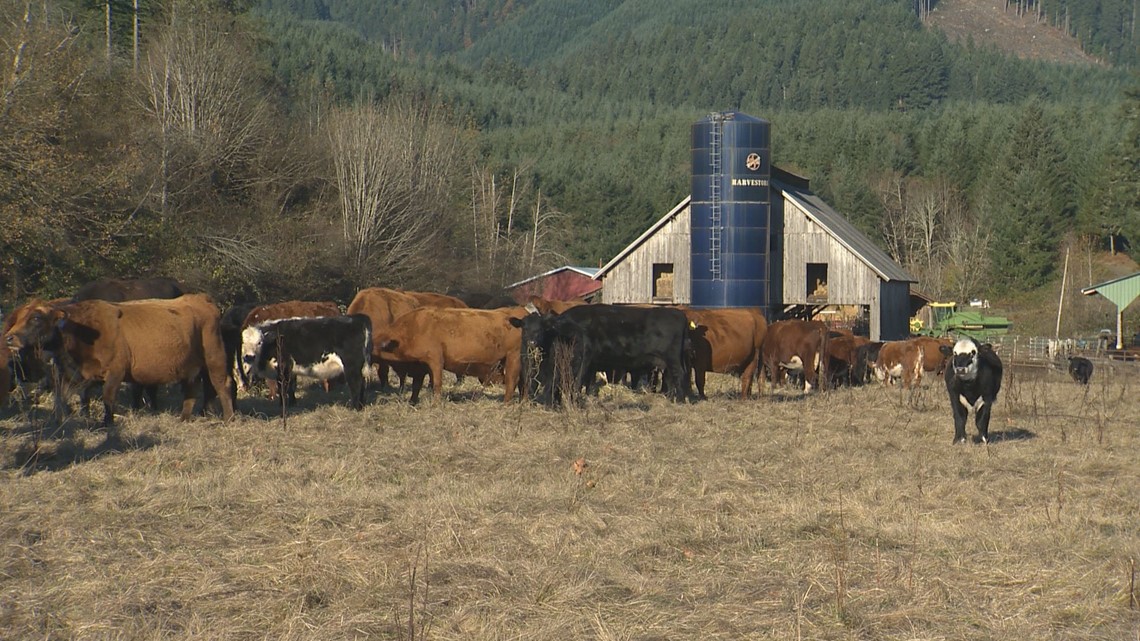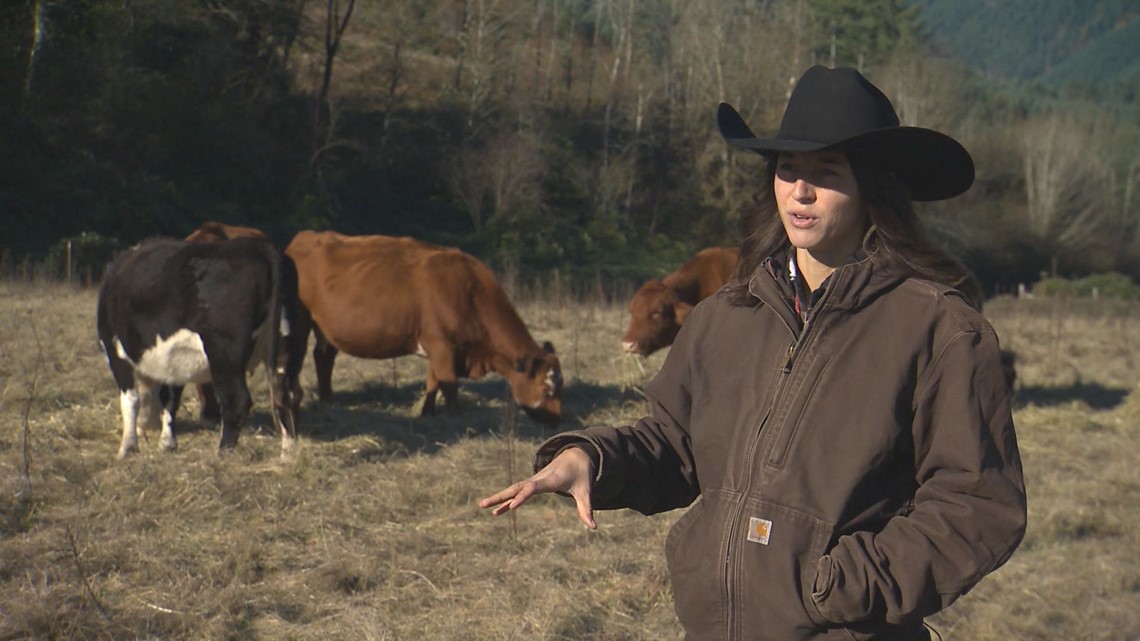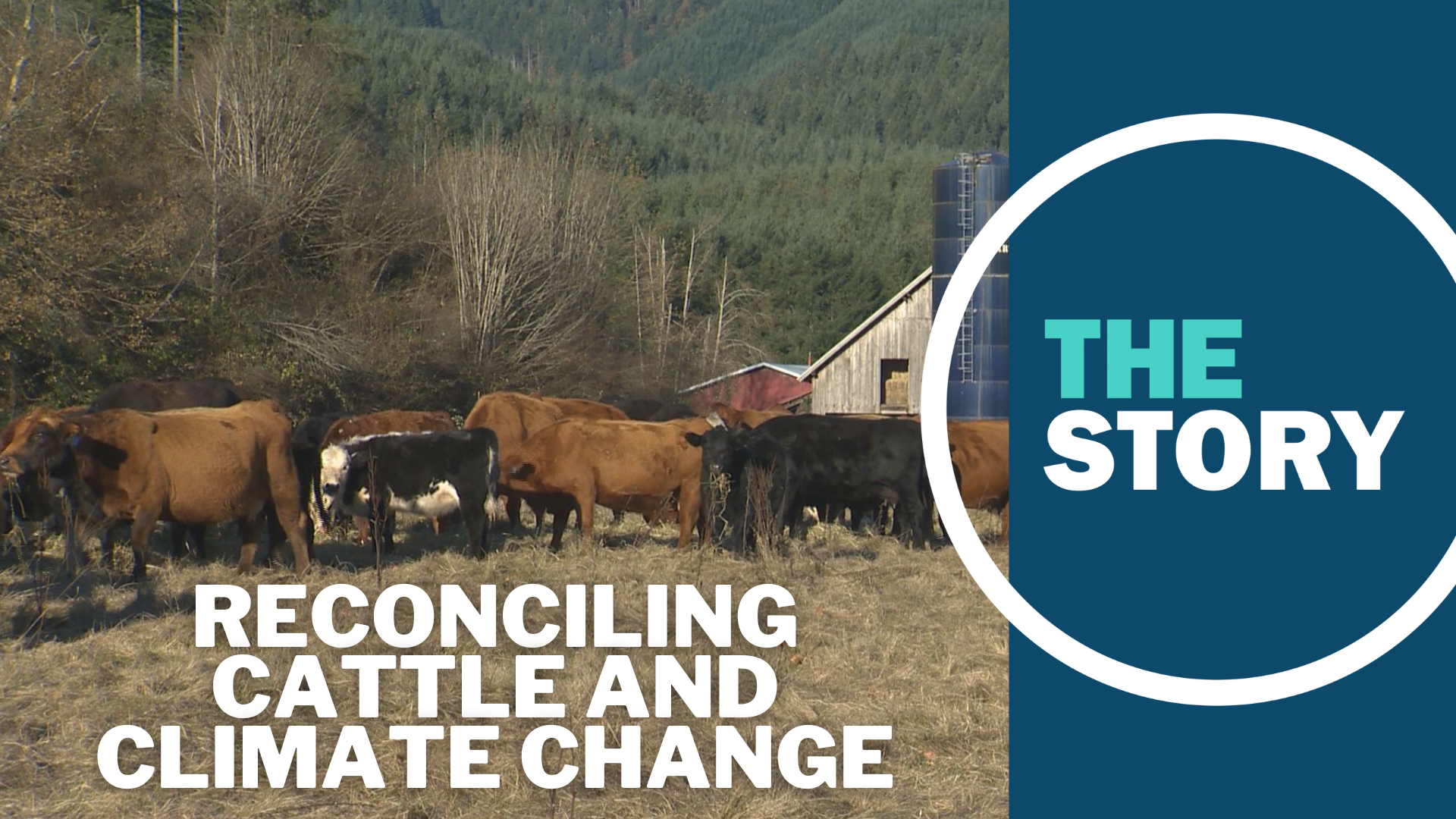PHILOMATH, Ore. — Dan Barnhardt has been raising cattle on his ranch outside of Philomath his whole life.
He inherited the ranch in Benton County from his father, who inherited it from his father, who started working the land during the Great Depression in the 1930s.
Barnhardt hopes to one day pass the land on to his children. Lately though, he’s been thinking about just what he’ll be giving to the next generation.
“If I don’t take care of the land, I don’t take care of the soils, what am I passing on?” Barnhardt said. “In a farm, that’s what you pass along. The ability to grow things and so the soil is critical to that.”
Barnhardt is part of the Country Natural Beef cooperative, a group of roughly 100 ranches that graze cattle on 6.5 million acres of public and private land in 11 western states. The company recently launched a new program called Grazewell, which will use regenerative ranching practices to reduce the environmental impact of raising cattle.
The company’s head of marketing, Dan Probert, explained the scale of the new program.
“As far as I’m aware of, this is the largest group implementing a regenerative program at this scale,” Probert said. “We’re wanting to move beyond sustainability. We can sustain something, but what we’re actually trying to do is make it better.”
What does regenerative ranching mean?
Regenerative ranching is not any one thing, but a suite of practices that can range from shorter grazing rotations to eliminating the use of chemical fertilizers.
“Its focus is on enhancing and restoring holistic, regenerative, resilient systems, supported by functional ecosystem processes and healthy organic soils,” said Hannah Gosnell, a professor at Oregon State University and an expert on regenerative agriculture, who noted that livestock graze on a vast majority of land in the west, so how they graze is important.
“Ranchers control a good part of the west,” she said. “If you care about biodiversity and conservation, you need to know what’s happening on rangelands.”


Beef has long been a staple of the American dinner table. Steaks are lauded as the height of luxury, cheeseburgers as quintessential to any barbeque and beef stew as the exemplary comfort food. The U.S. has ranked consistently among the top consumers of beef per capita in the world for years.
But all that red meat consumption comes with a hefty environmental toll. Cows emit substantial amounts of greenhouse gasses as part of their digestive process and land used for traditional grazing can suffer from erosion, lack of biodiversity and poor soil, which stores far less water and carbon dioxide than it might if it were put to other uses.
But that’s what the Grazewell program is looking to change, Probert said.
“We want to measure that we’re trending in a positive direction and it starts with a healthy soil,” he said.
One of the best ways to increase soil health is to boost the amount of organic matter it contains. To achieve that, Gosnell explained, cattle must be closely monitored and moved frequently to make sure they aren’t over-using any one particular piece of land, a practice known as holistic grazing.
“They want the cow to come through, take one bite of everything and then move them on, so the plant has been stimulated to grow more roots, but it’s not being killed,” she said.
The impacts
Making sure the cows aren’t nibbling grasses all the way to the root has multiple benefits. It encourages growth of native grasses and can keep invasive plants at bay. It increases biodiversity and can prevent erosion. It helps the soil store more water, which will be increasingly important as climate change is projected to make severe drought more commonplace throughout the west.
Holistic grazing also increases the amount of carbon that can be stored in soils, Probert said.
“So if we allow a plant to fully recover before we graze it, that is the practice that allows us to actually put carbon back in the soil,” Probert said.
Country Natural Beef is partnering with Sustainable Northwest, a Portland-based nonprofit that works with the agriculture sector to improve the ecological health of working lands, on the Grazewell program. Dallas Hall Defrees, the regenerative ranching coordinator with the organization, said there was little to be done about the methane emitted by livestock, but by putting more carbon in the soil, known as natural carbon sinks, some of those emissions would be offset.


“Methane, which cattle produce, exists in the atmosphere and there’s things to mitigate that, but not much. But the power they have to sequester carbon when managed properly is really an advantage,” she said, noting that doing so across all of Country Natural Beef’s rangelands could have a sizable effect.
“If we can increase (stored) carbon, even a little bit, across those 7 million acres, that will be a ginormous impact on the climate,” she said.
The ability to offset some of the methane emissions that come directly from cows will be increasingly important as well. Methane is a greenhouse gas that can trap up to 80 times more heat in the atmosphere than carbon dioxide, but it also stays in the atmosphere for a much shorter time span.
Still, methane emissions will need to fall by a third by 2030 to avert the worst impacts of climate change, according to the most recent report from the United Nations’ Intergovernmental Panel on Climate Change.
Livestock are responsible for roughly 37% of U.S. methane emissions, with cattle making up the vast majority.
Gosnell said that, while reducing meat consumption is the fastest way to bring down emissions from livestock, regenerative practices are the rare solution that works on both sides of the climate coin; helping ranchers lower their emissions while also increasing their adaptability to a hotter future.
“Livestock production is a huge contributor to climate change,” she said. “What’s cool about regenerative ranching is it really brings together climate change mitigation and climate adaptation.”
Overcoming barriers
There are a number of substantial barriers to adopting the practices, though, according to Gosnell. Rural communities can be insular and there can be a social stigma to trying new things.
“A lot of time there’s fear of change, there’s habit, there’s tradition, there’s ego and pride,” Gosnell said. “You kind of have to admit that the way you’ve been doing it isn’t working and you have to do things differently and that takes some humility.”
There are also some upfront costs that can put some ranchers off the idea of regenerative agriculture. For County Natural Beef, their partnership with Sustainable Northwest has given them access to part of a $10 million grant program that will help with some of those costs.
Hall Defrees said they’ll start by doing comprehensive soil testing on all 100 of the company’s ranches over the next three years so that ranchers have a baseline against which they can measure progress. They’ll also be funding workshops, technical assistance and peer-to-peer working groups.
Hall Defrees was confident that, once other ranchers begin to see the benefits of regenerative ranching, the practices will spread quickly.
“I think once people start looking across their neighbor’s fence and start seeing ‘wow their grass, their land is actually looking better. Maybe I should pay attention to what they're doing,’ I really think this will start snowballing,” she said.
As a rancher herself, Hall Defrees said it’s imperative that the agriculture sector do its part.
“Having a healthy food supply and maintaining working lands is really vital just to the social and economic health of our society,” she said. “We really have a responsibility here to positively impact that land and not only sustain it, but improve it for generations to come.”


